Pinus sylvestris (Scots Pine)
Michael's Opinion
Considered invasive, if ever you had a pine Christmas tree, chances are it was a Scots Pine. Although considered invasive, it is still a beautiful tree with its quirky red-orange bark.
Botanical Information
| Family | Pinaceae |
| Genus | Pinus |
| Species | sylvestris |
| Category | Woody |
| Type | Tree (evergreen) |
| Origin | Europe and Asia but may be naturalized in other areas. |
| Ethnobotanical Uses Disclaimer | Christmas trees. |
| Pronunciation |
Details
| USDA Hardiness Zone | 2 - 7 |
| USDA Hardiness Ref. | |
| Canadian Hardiness Zone | 1-9 |
| Canada Hardiness Ref. | |
| RHS Hardiness Zone | H5-H7 |
| RHS Hardiness Ref. | |
| Temperature (°C) | -46 - (-15) |
| Temperature (°F) | -50 - 5 |
| Height | 10 - 20 m |
| Spread | 10 - 15 m |
| Growth | Fast |
| Flowering Period | May |
Description and Growing Information
| General Description | At seven years old it is your stereotypical Christmas tree growing into something rather irregular upon reaching maturity. |
| ID Characteristic | Orange bark with two needle bundles which are twisted blue and green. |
| Shape | Loose pyramidal when young with a flat rounded top at maturity. |
| Propagation | By seed. |
| Cultivation | Loathes the shade but can succeed in most forest locations in Canada and the northern United States. |
| Pests | In its native range it is prone to red band needle canker (Dothistroma), pine pitch canker (Fusarium circinatum), and pine-tree lappet moth (Dendrolimus pini). |
| Notable Specimens | Heritage Trees in Elgin County, Ontario, Canada, have noted a specimen at 132 Centre St, St Thomas and 36018 Mc Diamid Line. Trebah Gardens, Mawnan Smith, Nr Falmouth, Cornwall. |
| Habitat | Dry upland areas. |
| Bark/Stem Description | Orange and red and flaking in the upper crown; grey brown at base with fissures and plates. |
| Flower/Leaf Bud Description | Cylindrical, short-pointed and resinous |
| Leaf Description | Blue hued bloom on two short, stiff and twisted needles per quill that remain on the tree for around three years. |
| Flower Description | In late May pollen is shed from bright yellow male strobili. Pink at first, the female strobili turn into green immature cones in their second year. |
| Fruit Description | One of the smallest pine cones: ranging from 5–7 cm in length, pyramidal in shape, sharp and pointed. |
| Colour Description | Orange red bark gradating down to a grey brown base, with blue tinged needles. |
| Texture Description | Medium coarse. |
Photographs
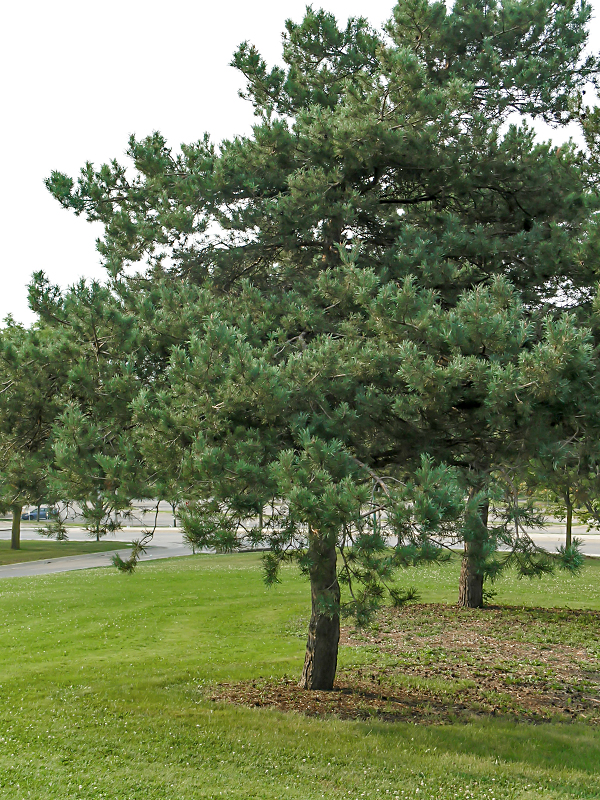
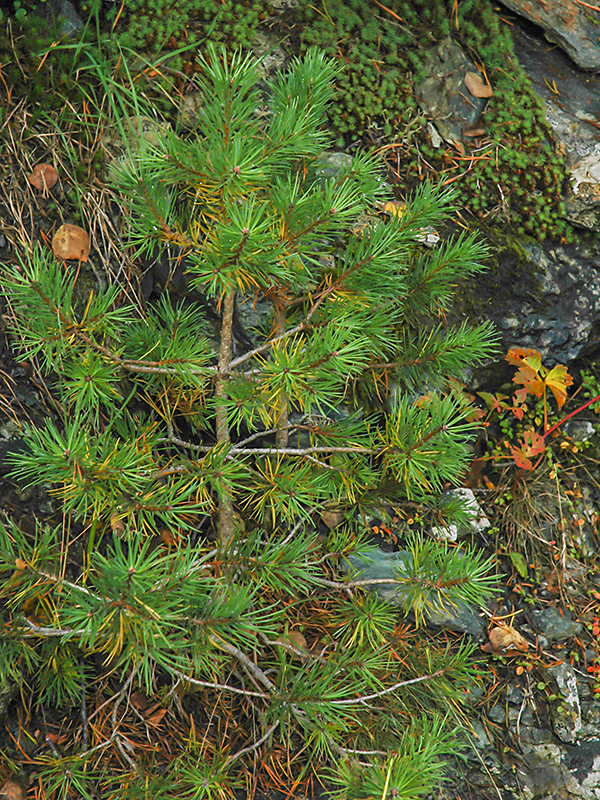
Immature Cone.
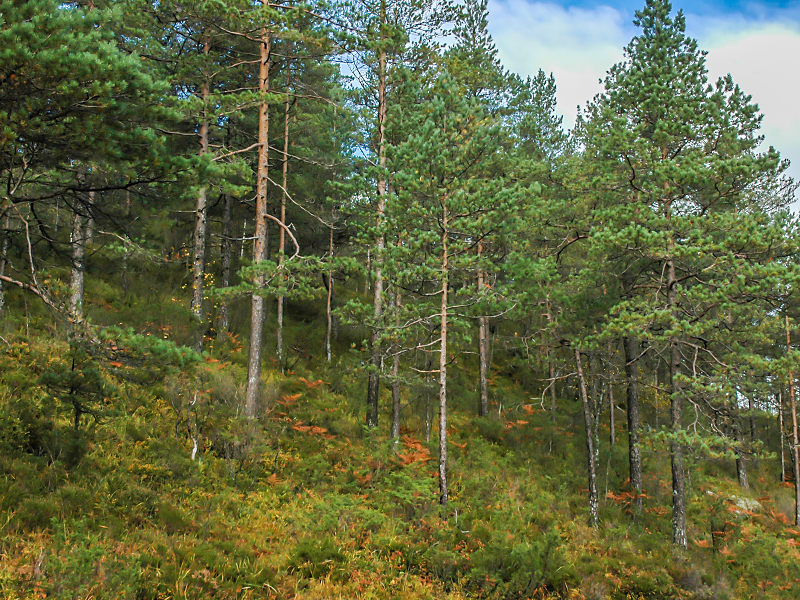
A mature stand of trees in Southern Norway.
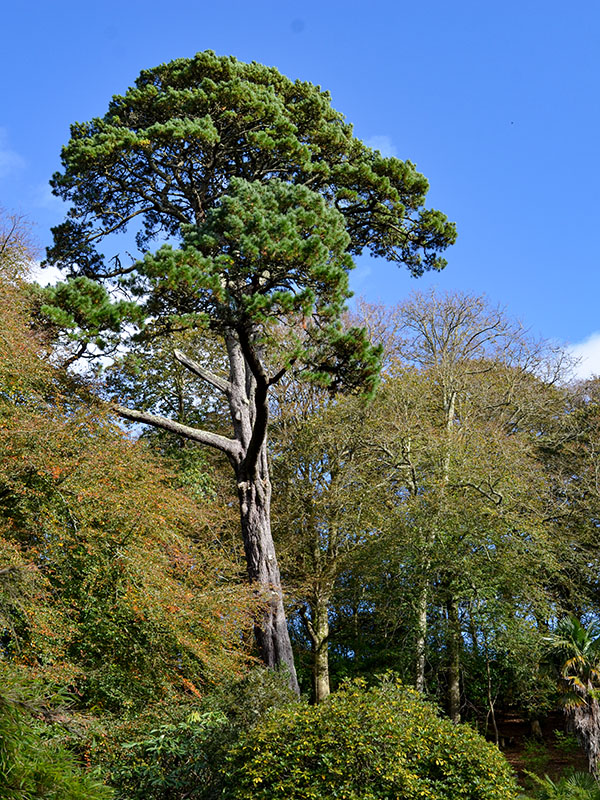
Pinus sylvestris, form. Trebah Gardens, Mawnan Smith, Nr Falmouth, Cornwall. 15/10/2019.
A mature specimen in the Wakehurst Garden, England.

Seedling.
Seedling in winter.
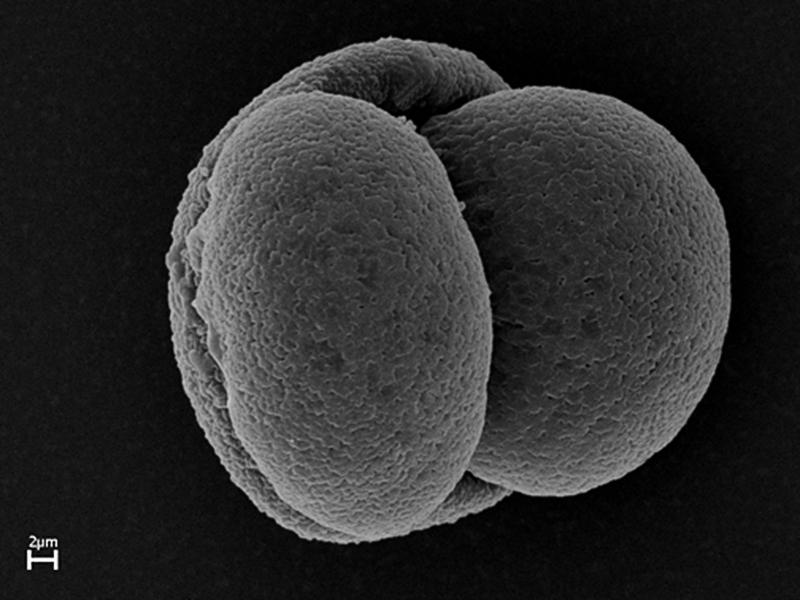
Scanning electron microscope image of pollen grain.
Pinus sylvestris var. fastigiata 'Fastigiata'
Pinus sylvestris 'Aurea'
-1.jpg)
Pinus sylvestris 'Beuvronensis' in Nymans Garden, England.
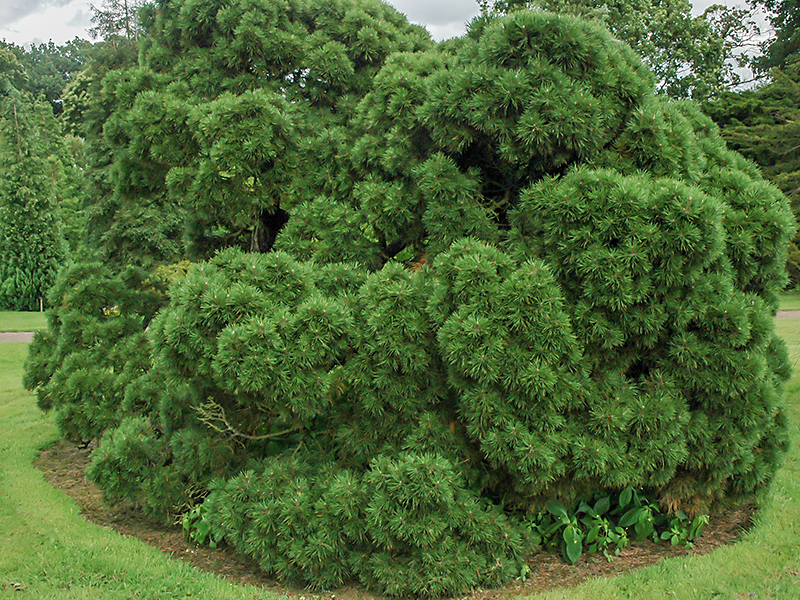
Pinus sylvestris 'Moseri' in Nymans Garden, England.
Pinus sylvestris 'Wolting's Gold' at Fanshawe College, London, Ontario.
Pinus sylvestris 'Albyns' at the Toronto Botanical Gardens, Toronto, Ontario, Canada.
Pinus sylvestris 'Hillside Creeper'
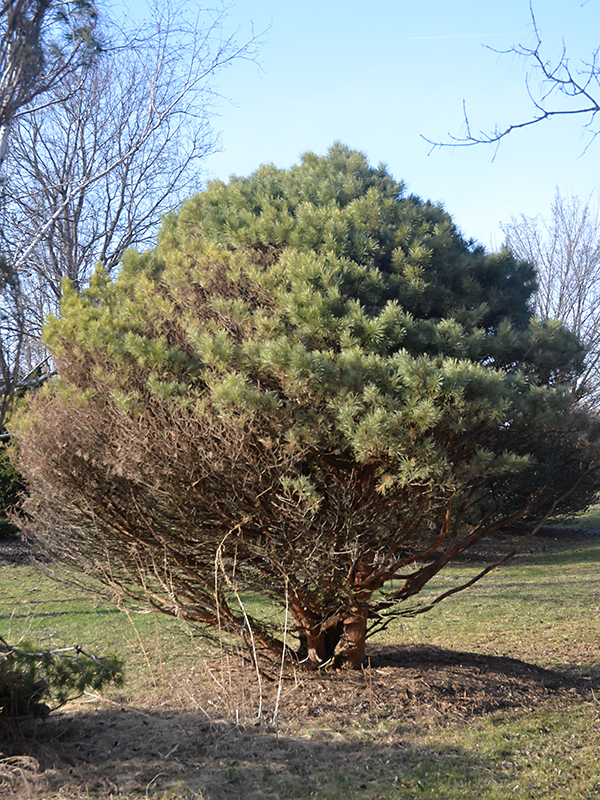
Pinus sylvestis 'Watereri' at the Arboretum, University of Guelph, Guelph, Ontario, Canada.
Pinus sylvestris 'Chantry Blue', RHS Garden Rosemoor, North Devon, England.
Pinus sylvestris 'Gold Coin', RHS Garden Rosemoor, North Devon, England.